The Big Clock

Brief Synopsis
Cast & Crew
John Farrow
Ray Milland
Charles Laughton
Maureen O'sullivan
George Macready
Rita Johnson
Film Details
Technical Specs

Synopsis
As George Stroud, editor-in-chief of Crimeways magazine, hides from security guards in the clock tower of the Janoth Publications building in New York City, he reflects on the fact that thirty-six hours before, he was leading a normal life as a Janoth employee: George, who is finally about to go on his honeymoon after seven years of marriage, is ordered by his tyrannical boss, Earl Janoth, to go on assignment or be fired. Fed up with being loyal to a firm that is jeopardizing his family life, George quits. He then joins Janoth's mistress, Pauline York, in a bar and misses his honeymoon train while drowning his sorrows. Pauline, also tired of Janoth's egocentric manipulations, offers to help George humiliate Janoth by writing a torrid biography of him. After George tells Pauline that Janoth fired a man earlier in the day for choosing red ink over Janoth's preferred green, they go on a drunken search for a green clock as a "present" for Janoth, who is obsessed with time. While in an antique shop, George and Pauline out-bid a middle-aged woman for a Patterson painting, unaware that she is the eccentric Louise Patterson herself. Later, they visit Burt's Sports Bar, which George frequents, and George introduces Pauline to McKinley, a radio actor friend whose roles have included President McKinley and Jefferson Randolph. Playfully fulfilling their quest for a green clock, Burt gives George and Pauline a sundial, then adorns it with a green ribbon. Eventually, George takes Pauline home and collapses in a drunken stupor on her couch. Around one-thirty in the morning, Pauline sees Janoth arriving and rushes George out the door with his painting. Before reaching Pauline's door, Janoth catches a glimpse of a man catching the elevator, and he and Pauline then quarrel about their respective infidelities. Pauline tells Janoth she spent the evening with a man named Jefferson Randolph. When Janoth insults her, Pauline cruelly declares that women only go out with him for his power and position. Enraged, he stabs her with the sundial, killing her. He then calls one of his loyal editors, Steve Hagen, for help, and Hagen goes to Pauline's apartment and sets her clock back. He also takes George's handkerchief that was soaked in green liquor from Pauline's purse, and returns the sundial to Burt's bar. George, meanwhile, has flown to Virginia to meet his wife Georgette, and tells her that after he missed their train, he walked the streets despondently because she had not waited for him. Janoth telephones and apologizes before asking George to locate a man named Jefferson Randolph. George believes Janoth is trying to find the man who was seen with Pauline and feels compelled to return to New York. There, George sends his staff out on assignment to locate Jefferson Randolph, then tries to hide the fact that the descriptons all point to him. One staff member, Don Klausmeyer, figures out that the blonde seen with Jefferson Randolph the previous night is a model named Pauline York and goes to her apartment. George arrives first and finds Pauline dead, turns the clock ahead, then goes to confront Janoth about why he did not go to the police. Janoth craftily says he merely wanted the exclusive on a good story. As witnesses to Pauline and George's drunken antics are gathered in the Janoth building, the antiques dealer spots George in the lobby and tells Janoth that the killer is in the building. George is now trapped, unable to interview a cabbie who took Janoth home following the murder. Hagen, meanwhile, has printed an article in the evening newspapers offering a reward for a missing Patterson painting, hoping to bait the killer. Georgette, finding the painting in her bedroom, goes to George's office to confront him about his affair with Pauline York. After he explains everything to her, she agrees to locate the cabbie. Meanwhile, Louise Patterson has arrived to sketch a picture of the man who bought her painting. As soon as she realizes that he is none other than George, she offers to protect him in exchange for money. Janoth, meanwhile, has ordered his bodyguard, Bill Womack, to pay the cabbie to skip town, and Georgette ends up back at the building. At the same time, several witnesses are touring the building in search of Jefferson Randolph. While George and Georgette hide in Hagen's office, she finds George's handkerchief in Hagen's cigarette box, and George decides to try and frame Hagen for the murder in order to draw out Janoth. George then goes into the clockworks and, having mulled over the last thirty-six hours, takes action. George calls the cab company and learns that Hagen took a cab from Pauline's apartment early that morning. After George mistakenly hits a switch that momentarily stops all the building's clocks, Janoth sends an armed Womack to catch the man in the clock. George traps Womack in a stalled elevator and escapes into Hagen's office, where Georgette has brought McKinley. George then tells Janoth and Hagen that he has found the killer, and when they arrive, he introduces McKinley as a police inspector, and accuses Hagen. Although Hagen calls George's bluff by recognizing McKinley as a regular at Burt's bar, McKinley says he saw Hagen return the murder weapon. After Janoth assures Hagen that he will provide Hagen with the best legal counsel, Hagen blurts out that Janoth killed Pauline. Janoth shoots Hagen and runs out. Although George tries to warn him not to take the elevator, Janoth fires a poorly aimed bullet at George before falling to his death in the elevator shaft. Louise then discovers McKinley, her long-lost fourth husband, and George calls the police as Georgette kisses him.

Director
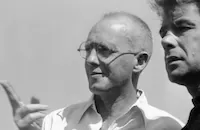
John Farrow
Cast

Ray Milland
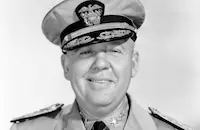
Charles Laughton

Maureen O'sullivan
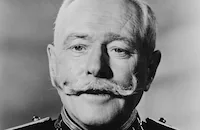
George Macready

Rita Johnson

Elsa Lanchester

Harold Vermilyea
Dan Tobin

Henry Morgan
Richard Webb

Elaine Riley
Luis Van Rooten
Lloyd Corrigan
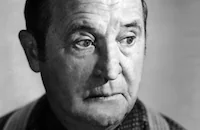
Frank Orth

Margaret Field
Philip Van Zandt

Henri Letondal

Douglas Spencer
Bobby Watson
B. G. Norman
Joey Ray
Frances Morris
Harry Rosenthal
Erno Verebes

James Burke
Lucille Barkley
Harland Tucker
Gordon Richards
Joe Whitehead
Henry Guttman
Len Hendry
Jim Davies

Noel Neill
Kay Young
Lee Emery
Wally Earl
Lillian Lindsco
Bea Allen
Mary Currier
Earle Hodgins
Darlene Mohilef
Sheila Raven
Robert Coleman
Norman Leavitt
Al Ferguson
Eric Alden
Pat Lane
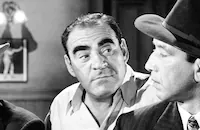
Ralph Dunn
Mike Donovan
Chuck Hamilton
Jim Drum
Bob Kortman
Stuart Holmes
Harry Anderson
Pepito Perez
Nicholas Vehr
Henry Guttman
Barry Norton
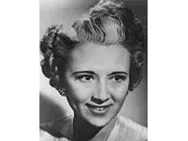
Bess Flowers
Frances Conley
Lucy Knoch
Dorothy Barrett
Jean Marshall
Virginia Doffy
Robbie Franks
Julia Faye
William Meader
Billy Burt
Jerry James
Skippy Elliott
Frederick Howard
Theresa Harris
Broderick O'farrell
James Carlisle
Bert Moorhouse
Don Mcgill
Mary Donovan
John Farrell
Frank Hagney
Marlene Aames
Judy Nugent
Napoleon Whiting
Dick Keene
Cliff Heard
Lester Dorr
Robert Stephenson
Gary Owen
Lane Chandler
Helen Spring
Robert Riordan
Franklyn Farnum
John Sheehan
Richard Gordon
Diane Stewart
Crew
Roland Anderson
Harry Caplan
William H. Coleman
Sam Comer
Ross Dowd
Hans Dreier
Farciot Edouart
Ernie Felice Quartet
Ray Evans
Gene Garvin
Harold Goldman
Hugo Grenzbach
Edith Head
Gordon Jennings
Jack Koffman
Jonathan Latimer
Jay Livingston
Ronnie Lubin
Richard Maibaum
Albert Nozaki
Otto Pierce
John F. Seitz
Charles Sickler
Eda Warren
Wally Westmore
Victor Young

Photo Collections
Videos
Movie Clip





Trailer
Hosted Intro
Film Details
Technical Specs

Articles
The Big Clock
The Big Clock is directed by John Farrow in an elegant style, described by Simon Callow in his book, Charles Laughton: A Difficult Actor, as "nearly" noir. As Callow puts it, "The play of shadows is handled in a masterly way, while the plot with its inversions and convolutions, presents an image of nightmarish reversals." Callow also speculates that Laughton, as Earl Janoth, the owner of a publishing empire, seemed to be, "drawing attention to the robotic heartlessness of big business." Just after World War Two, Americans were witnessing the building of corporate giants, and the complications that come from such growth and progress. As much as The Big Clock is an entertaining thriller, it also seems to be an attempt to come to grips with that loss of identity within the corporate milieu. Workers, now faced with more powerful corporate heads in the new streamlined workplace, could relate to Laughton's cunning portrayal of what Callow called, "a Napoleon of print." And the camera follows Laughton closely. It captures his nervous tics and twitches as he rules his employees with a fierce adherence to the adage that time does, indeed, equal money. A perfect example of this occurs when Laughton gives an order to an underling: "There's a bulb been burning for hours in a cupboard on the fourth floor. Find out who's responsible and dock his pay, will you?"
Charles Laughton probably played more memorable and varied characters than any actor who ever lived. Remember him as Captain Bligh in Mutiny on the Bounty, or as the butler who was won in a poker game in Ruggles of Red Gap, or as Javert in Les Miserables? All were released in the same year -1935! And then there's Laughton as the hearty monarch, Henry the VIII in The Private Life of Henry VIII (1933), or as the haunting Quasimodo in The Hunchback of Notre Dame (1939), or as a defense attorney outwitting everyone in Witness for the Prosecution (1957). In The Big Clock Laughton gives one of his more fascinating performances. As Earl Janoth, he rules over a publishing world that would rival Hearst or Murdoch. As Callow puts it, "The performance is a technical tour-de-force of high-speed throwaway, comic and powerful at the same time." We know everything about what he (Janoth) is, and how he works - like a clock, as it happens, the image that dominates and unifies the whole film."
But it was Ray Milland who received top billing in The Big Clock, a rather ironic turn of events considering that Laughton once helped Milland as a struggling young actor in a supporting role in Payment Deferred (1932). If anything was made of this Hollywood twist of fate, it doesn't show in the final product. The two men work well together and Milland is, as always, the consummate professional. We feel his confusion and anxiety as a man who misses a train and has a fateful, soon-to-be disastrous meeting. A meeting which leaves him a man on the run, desperate to clear himself of murder. Born Reginald Alfred John Truscott-Jones, the official word on how he changed his name to Milland confirms that he took it from his stepfather's surname, Mullane. But the Hollywood version of the facts is more interesting: He took the name Milland because of his fond memories of the mill lands in his home area of Neath in Wales. The actor had a long and distinguished career (57 years in the movies), specializing in well-bred heroes and proper British gentlemen. But when Milland won the Oscar for his gritty portrayal of an alcoholic in The Lost Weekend (1945), he began to take on less glamorous, more challenging roles. In movies like Dial M for Murder (1954), for example, he comes full circle playing a jaded sophisticate and man-about-town who plots his wife's murder. Coming just two years after The Lost Weekend, The Big Clock came at a transitional point in Milland's career, offering him a role that falls somewhere between the elegant leading man of his earlier period and the more cynical and corrupt characters he later essayed.
Based on Kenneth Fearing's novel of the same name, The Big Clock was remade as No Way Out (1987). A conspiracy thriller set in Washington, D.C. and starring Kevin Costner, it is best remembered for a steamy sex scene between Costner and Sean Young in the back seat of a car.
As a final note there were two real life couples working on The Big Clock. Elsa Lanchester, Laughton's wife, plays an eccentric artist in a funny supporting role, and Maureen O'Sullivan, John Farrow's wife, took a small role as Milland's long-suffering spouse in order to be closer to her director husband. The third of the Farrows' seven children is the actress, Mia Farrow.
Producer: John Farrow, Richard Maibaum
Director: John Farrow
Screenplay: Jonathan Latimer, based on the novel by Kenneth Fearing
Art Direction: Roland Anderson, Hans Dreier, Albert Nozaki
Cinematography: Daniel L. Fapp, John F. Seitz
Costume Design: Edith Head
Film Editing: LeRoy Stone
Original Music: Victor Young
Principal Cast: Ray Milland (George Stroud), Charles Laughton (Earl Janoth), Maureen O'Sullivan (Georgette Stroud), George Macready (Steve Hagen), Rita Johnson (Pauline York), Elsa Lanchester (Louise Patterson), Harry Morgan (Bill Womack), Dan Tobin (Roy Cordette).
BW-95m. Closed captioning.
by Joseph D'Onofrio

The Big Clock
Quotes
Trivia
Notes
The film's working title was Judas Picture. Author Kenneth Fearing also published a condensation of his novel titled The Judas Picture in American magazine. Maureen O'Sullivan, who was married to director John Farrow, returned to the screen after a five-year hiatus. According to Par News, the elevator in the final scenes of the film was a set piece that was operated hydraulically and could be hoisted ten feet. Ray Milland and O'Sullivan recreated their roles on radio for The Screen Director's Playhouse on July 15, 1949. The film was nominated for the Edgar Allan Poe Award for best mystery picture of 1948; nominations were selected by a group of prominent American mystery writers. Elements of the story were re-woven into the 1987 film No Way Out, based on Kenneth Fearing's novel, directed by Roger Donaldson and starring Kevin Costner, Gene Hackman and Sean Young.

















